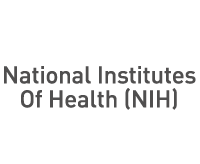National Institutes Of Health (NIH)


Advances in medical imaging are helping patients around the world get better care. Quantum helps imaging sciences teams stay focused on driving research forward—rather than on managing the storage infrastructure.


Finding A Cure For A Growing Medical Image Library
The department of Radiology and Imaging Sciences (RIS), part of the Clinical Center at NIH, oversees 750TB of imaging data today, with growth measuring roughly 10% every month.
“The images help researchers analyze everything from cancer to the common cold, with a single study generating as many as 82,000 images,” explains Jeff Plum, vice president at MedData, the contractor that helps the NIH manage its medical image archive.“And with most of the data, it must be stored and protected indefinitely—effectively forever.”
“The system needs scalability to keep up with growth. It needs very high performance to allow multiple researchers to access the data at the same time. And it needs to be able to preserve and protect data for the long term.”
The entire storage system and workflow is supported by StorNext File System from Quantum.
Controlling Costs Of A Petascale Archive With Tiered Storage
StorNext provides high-speed shared access to the images—as well as a cost-effective combination of high-speed disk and economic LTO tape. Users access data across all tiers from a single interface.
“The workflow brings data onto the high speed disk where it resides for as long as active research is being conducted,” Plum says. “Copies are created on tape every day, and when the images are no longer active, files are removed from disk and exist only in the archive.”
Accelerating Workflows With Storage Built For Speed And Scale
“StorNext supports very large amounts of data,” Plum explains. “The smallest file system has 47TB and over 110 million files—and it allows for resources to be added quickly and transparently. Capacity can be increased whenever needed just by adding more arrays.”
“The performance of StorNext is extremely high,” adds Plum. “The scientists with SAN-attached workstations see direct Fibre Channel speeds…even when many of them are working on the same data sets. StorNext works seamlessly with all of the applications, even the roll-your-own applications that the research teams develop.”
“It is also compatible with the standard PACS* tools, and the enhanced DICOM** format. StorNext has also let MedData establish LAN clients. That means that scientists can analyze data in the lab over high-speed Fibre Channel, then go back to their offices and download the same files to their laptops to use in presentations.”
Archiving Research Assets Indefinitely
At the NIH, protecting data for future use is a high priority.
“With StorNext, MedData is able to create two copies of new data on tape, including one copy in the LTFS Linear Tape File System open standard,” explains Plum. “Going forward, that second copy can be read without having to rely on any specific hardware or application.”
In addition, Quantum’s EDLM feature periodically checks media to ensure its integrity.
Simplifying Administration With Superior Service And Support
The RIS team at NIH was initially concerned about transitioning from their previous Xsan and Active Storage solutions to StorNext, but Quantum made it easy.
“Quantum really stepped up and made the move to StorNext easy,” Plum notes. “It was up and running without impacting research, doctors, or patients.”
RIS and MedData have also been impressed with Quantum support.
“Twice…the Quantum service team looked at data sent from the drives, told MedData that they were headed for problems before we saw any symptoms, and overnighted us replacements,” says Plum.
Deploying Storage Built For The Future Of Medical Imaging Data
The StorNext platform gives RIS the scalability it needs to support imaging technologies as they evolve.
“Quantum also gives us a path to a next-generation object storage technology tier when MedData is ready for it,” says Plum. “Object storage is a great fit for the long-term preservation of scientific data.”
*Picture Archiving and Communication System ** Digital Imaging and Communications in Medicine


